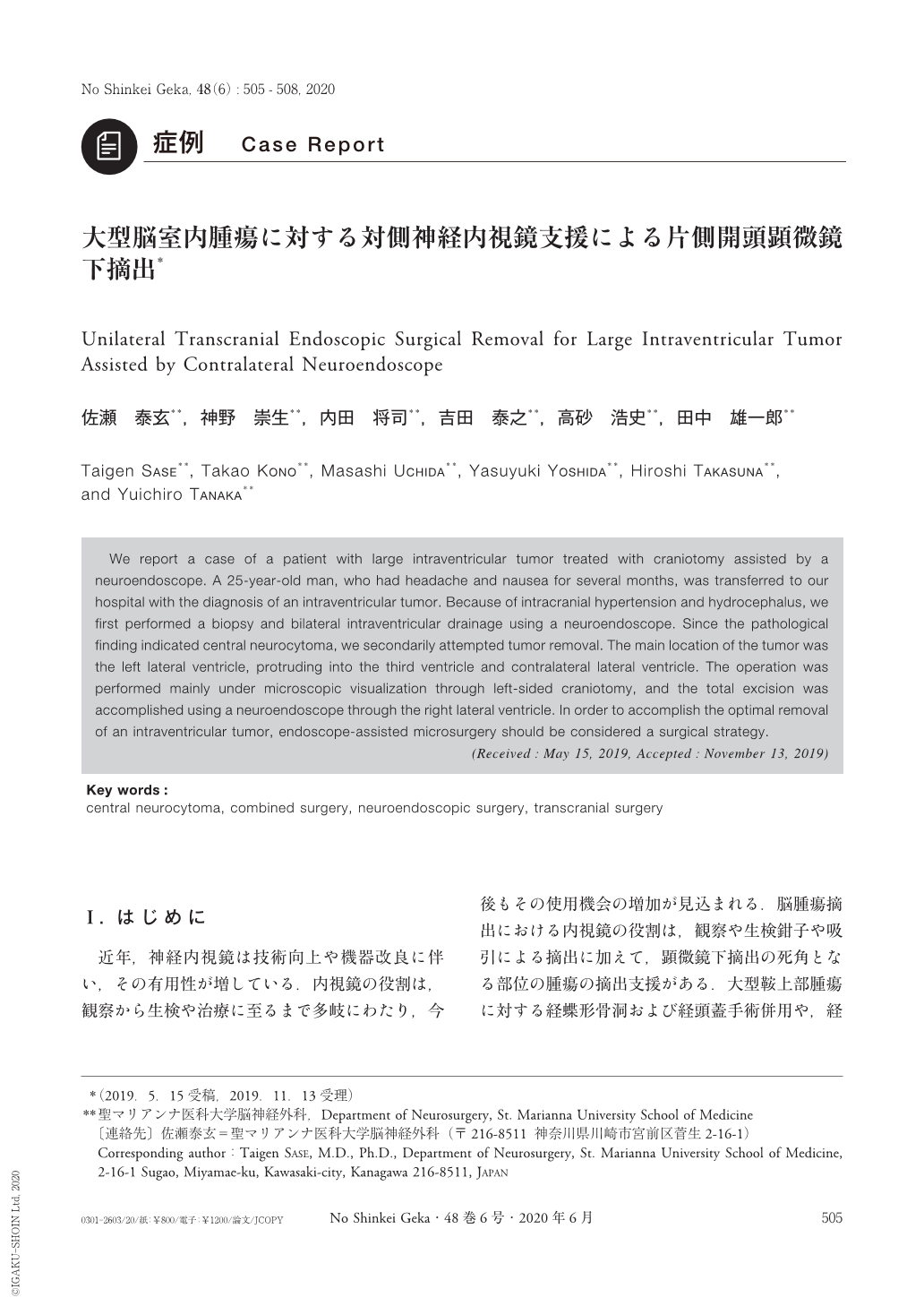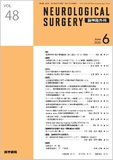Japanese
English
- 有料閲覧
- Abstract 文献概要
- 1ページ目 Look Inside
- 参考文献 Reference
Ⅰ.はじめに
近年,神経内視鏡は技術向上や機器改良に伴い,その有用性が増している.内視鏡の役割は,観察から生検や治療に至るまで多岐にわたり,今後もその使用機会の増加が見込まれる.脳腫瘍摘出における内視鏡の役割は,観察や生検鉗子や吸引による摘出に加えて,顕微鏡下摘出の死角となる部位の腫瘍の摘出支援がある.大型鞍上部腫瘍に対する経蝶形骨洞および経頭蓋手術併用や,経脳室内視鏡手術と顕微鏡下経蝶形骨洞手術の同時併用の有効性が報告されている1,4,5).これらの報告は,腫瘍の上下方向からの手術アプローチ併用であった.
今回われわれは,アプローチ方向をパラレルにした併用術の有効性を経験した.両側脳室正中の腫瘍を摘出する際に,片側側脳室経由の顕微鏡術野で死角となる部分を,内視鏡による対側脳室経由でよりスムーズに摘出できた.治療戦略とその結果を報告し,考察を加える.
We report a case of a patient with large intraventricular tumor treated with craniotomy assisted by a neuroendoscope. A 25-year-old man, who had headache and nausea for several months, was transferred to our hospital with the diagnosis of an intraventricular tumor. Because of intracranial hypertension and hydrocephalus, we first performed a biopsy and bilateral intraventricular drainage using a neuroendoscope. Since the pathological finding indicated central neurocytoma, we secondarily attempted tumor removal. The main location of the tumor was the left lateral ventricle, protruding into the third ventricle and contralateral lateral ventricle. The operation was performed mainly under microscopic visualization through left-sided craniotomy, and the total excision was accomplished using a neuroendoscope through the right lateral ventricle. In order to accomplish the optimal removal of an intraventricular tumor, endoscope-assisted microsurgery should be considered a surgical strategy.

Copyright © 2020, Igaku-Shoin Ltd. All rights reserved.


